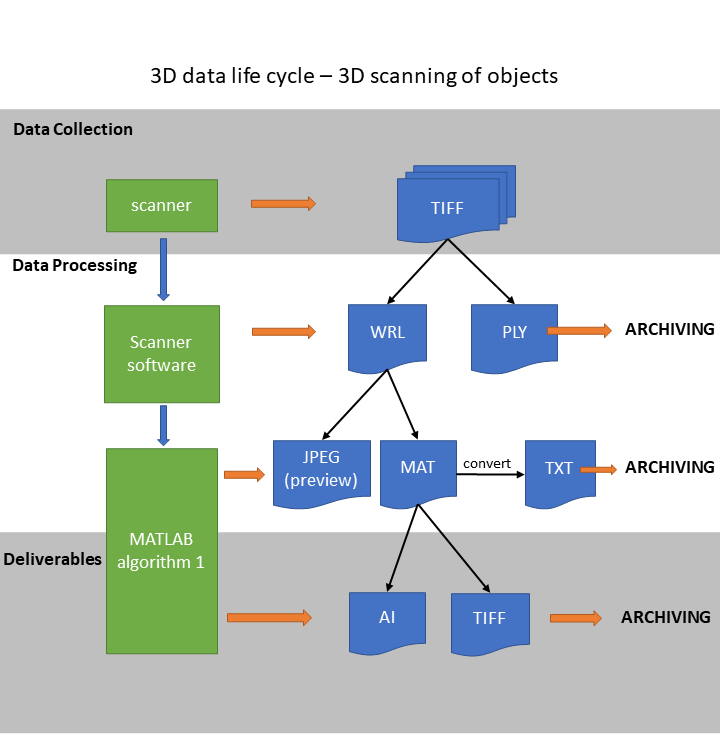Difference between revisions of "Workflow:Archiving outputs of 3D scanning"
Jump to navigation
Jump to search
| Line 11: | Line 11: | ||
<!-- To add an image of your workflow, open the "Upload File" link on the left in a new browser tab and follow on screen instructions, then return to this page and add the name of your uploaded image to the line below - replacing "workflow.png" with the name of your file. Replace the text "Textual description" with a short description of your image. Filenames are case-sensitive! If you don't want to add a workflow diagram or other image, delete the line below --> | <!-- To add an image of your workflow, open the "Upload File" link on the left in a new browser tab and follow on screen instructions, then return to this page and add the name of your uploaded image to the line below - replacing "workflow.png" with the name of your file. Replace the text "Textual description" with a short description of your image. Filenames are case-sensitive! If you don't want to add a workflow diagram or other image, delete the line below --> | ||
| − | [[File:| | + | [[File:COPTR_3D_workflow.png|Diagram showing the workflow from data acquisition (object scanning) to the outputs of the process: object drawings, and the file formats that need to be archived through the process.]]<br> |
<!-- Describe your workflow here with an overview of the different steps or processes involved--> | <!-- Describe your workflow here with an overview of the different steps or processes involved--> | ||
Revision as of 09:39, 6 March 2022
Workflow Description
Purpose, Context and Content
The workflow documents the process of creating 3D models (of objects) and their derivatives by a stereo-scanner, and specifies which outputs can and need to be archived.
Data acquisition - scanning (and archiving?)
Data processing
- Generating and archiving 3D meshes.
- Positioning of an object based on its geometric properties.
Output - generating and archiving standard drawings or set of views on the model.
Evaluation/Review
Further Information
Scanner software: https://www.polymetric.de/index.php?id=44&L=2
Core publications:
Karasik, A. and Smilansky U. 2011. Computerized morphological classification of ceramics. Journal of Archaeological Science 38(10):2644-2657.
Karasik, A. and Smilansky U. 2008. 3D scanning technology as a standard archaeological tool for pottery analysis: practice and theory. Journal of Archaeological Science 35(5):1148-1168.
